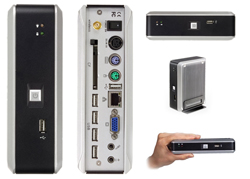This seminar will discuss the role of the Internet and the web in emergency warning systems, particularly for Tsunami and for disaster recovery. It looks at the optimization of the design of web based systems for emergencies, including compatibility with mobile telephones. The speaker argues that Internet and web technologies can be used for communication of emergency information to the public, but will require a change in message formats previously intended for emergency workers.
Tom Worthington is an independent ICT consultant. He is a member of the Project Management Committee of Sahana open source disaster management system used for the 2004 Indian Ocean tsunami. At the Australian National University he teaches the design of web based systems and mCommerce. As Director of Professional Development of the Australian Computer Society, responsible for e-learning programs.
Tom is an Honorary Life Member of the Australian Computer Society. He was elected a Fellow of the ACS for his work on Internet social policy. He is a voting member of the Association for Computing Machinery and a member of the Institution of Electrical and Electronic Engineers Computer Society.
The Australian Strategic Policy Institute has released the report Taking a punch: Building a more resilient Australia. It argues that recent disaster planning has overemphasized terrorist attacks, which are unlikely and more effort should be devoted to natural disasters, which occur frequently in Australia. The argue the community needs to be resilient to deal with disaster themselves, rather than assuming that if the call 000 someone will come to help.
The Australian Strategic Policy Institute report Taking a punch: Building a more resilient Australia points out that VOIP communications may make Australia more vulnerable:
VOIP (voice over internet protocols) technology is becoming of much greater importance so there will be challenges in reaching those who rely on internet access for all communications. ...
From: Strategic Insights 39 - Taking a punch: Building a more resilient Australia, David Templeman and Anthony Bergin, Australian Strategic Policy Institute, 7 May 2008
The Department of Broadband, Communications and the Digital Economy has issued a Request for Proposals to Roll-out and Operate a National Broadband Network for Australia. The RFP asks about provision of battery backup of the equipment and mentions emergency calls, but this is priority 16 out of 18. ICT professionals designing the system have an ethical obligation to make provision for the use of the system in an emergency. This should be treated as a high priority and ICT professionals who fail to do so may face charges of unethical conduct and crimes against humanity in the event of a major disaster. ICT professionals can also improve on the previous analog telecommunications system to provide better facilities for emergency warnings and disaster recovery, such as broadcast text messages for Tsunami warning direct to the public's mobile phones and web based disaster recovery software which treats the community has participants, not just as victims.
...Commonwealth’s objectives for the NBN... 16 is consistent with national security, e-security and e-safety policy objectives including compliance with laws relating to law enforcement assistance and emergency call services; ...
From: Request for Proposals to Roll-out and Operate a National Broadband Network for Australia, ATM ID DCON/08/18, Department of Broadband, Communications and the Digital Economy, 11-Apr-2008
Tsunami Warning Centers use the Internet to issue warning messages. However, the format of these predate the Internet and the web and are formatted for reading by experts, not the general public. It is assumed that the messages will be interpreted and reformatted for the public. However, this adds a delay to the process of the warning and its interpretation. There are attempts to provide new formats, such as maps for making information clearer, but these also tend to be designed for a technical audience.
As an example, the Pacific Tsunami Warning Center issued a local tsunami watch for Indonesia 0822Z 20 FEB 2008. The copy forwarded by the interim Indian Ocean Center is timed at one minute later 08:23:21 GMT. The watch was canceled at 0947Z 20 FEB 2008.
The Pacific Tsunami Warning Center's system provided a map and details of the earthquake.
The W3C's Web Content Accessibility Guidelines WCAG 1.0 provides advice on web design, based on the W3C - Web Content Accessibility Guidelines 1.0 (WCAG 1.0). These guidelines are usually used to make web pages suitable for people with a disability, such as the blind. However, the same techniques are intended for people who have limited Internet access, equipment or time to read the information. All of these apply to people and systems under stress due to an emergency.
The W3C Markup Validation Service for XHTML Basic is useful in checking web pages for embedded CSS and other HTML features which are not appropriate for efficient mobile pages.
As part of its Mobile Web Initiative, W3C have created a W3C MobileOK Basic checker service. This carries out some of the W3C mobileOK Basic Tests 1.0 against the W3C Mobile Web Best Practices 1.0.
The mobile web features can be used to create pages which are compatible with desktop computers, but will also function with mobile phones and other handheld devices. The web based systems can be designed to automatically adjust to the smaller screens and more limited bandwidth available.




